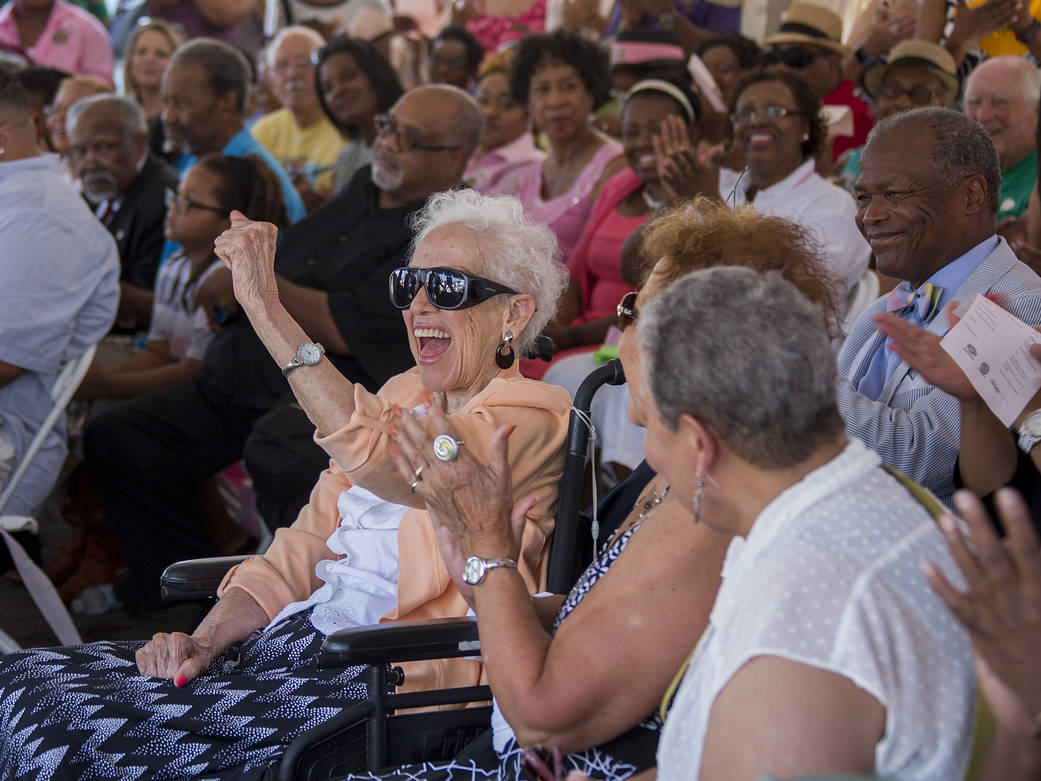Katherine Johnson passed away Feb. 24, 2020, after living a life filled with trail-blazing achievements. Being handpicked to be one of three black students to integrate West Virginia’s graduate schools is something that many people would consider one of their life’s most notable moments, but it’s just one of the breakthroughs that have marked Katherine Johnson’s long and remarkable life. Born in White Sulphur Springs, West Virginia, by thirteen, she was attending the high school on the campus of historically black West Virginia State College. At eighteen, she enrolled in the college itself, graduated with highest honors in 1937 and took a job teaching at a black public school in Virginia.
In 1953, Johnson began working in the all-black West Area Computing section at the National Advisory Committee for Aeronautics’ (NACA’s) Langley laboratory. Just two weeks into her tenure in the office, she was assigned her to a project in the Maneuver Loads Branch of the Flight Research Division, and Katherine’s temporary position soon became permanent.
In 1957, Johnson provided some of the math for the 1958 document Notes on Space Technology, a compendium of a series of lectures given by engineers in the Flight Research Division and the Pilotless Aircraft Research Division (PARD). Engineers from those groups formed the core of the Space Task Group, the NACA’s first official foray into space travel, and Katherine, who had worked with many of them since coming to Langley, “came along with the program” as the NACA became NASA later that year. She did trajectory analysis for Alan Shepard’s May 1961 mission Freedom 7, America’s first human spaceflight. In 1960, she and engineer Ted Skopinski coauthored Determination of Azimuth Angle at Burnout for Placing a Satellite Over a Selected Earth Position, a report laying out the equations describing an orbital spaceflight in which the landing position of the spacecraft is specified. It was the first time a woman in the Flight Research Division had received credit as an author of a research report.
In 1962, as NASA prepared for the orbital mission of John Glenn, Katherine Johnson was called upon to do the work that she would become most known for. The complexity of the orbital flight had required the construction of a worldwide communications network, linking tracking stations around the world to IBM computers in Washington, DC, Cape Canaveral, and Bermuda. The computers had been programmed with the orbital equations that would control the trajectory of the capsule in Glenn’s Friendship 7 mission, from blast off to splashdown, but the astronauts were wary of putting their lives in the care of the electronic calculating machines, which were prone to hiccups and blackouts. As a part of the preflight checklist, Glenn asked engineers to “get the girl”—Katherine Johnson—to run the same numbers through the same equations that had been programmed into the computer, but by hand, on her desktop mechanical calculating machine. “If she says they’re good,'” Katherine Johnson remembers the astronaut saying, “then I’m ready to go.” Glenn’s flight was a success, and marked a turning point in the competition between the United States and the Soviet Union in space.
In this image, she celebrates her 98th birthday, where a historical marker and bench were unveiled to mark the occasion. The event took place by the Virginia Air and Space Center at NASA Langley’s visitor center.
Image Credit: NASA



























